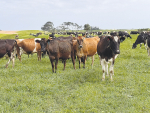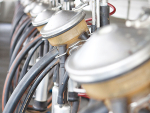Farmers are being urged to use milk cooling system upgrades to rein in their farm power costs.
James Thomas, DairyChill, says this presents a huge opportunity to farmers.
"Milk cooling and hot water combined on a farm are usually the main power costs," he says.
"New Zealand averages show these are around 53% of total farm power cost, so if you could save 50-80% of that in kW used it would make sense and offer the best payback."
He says Dairychill's main focus is on saving money onfarm.
"Dairychill's power savings are based on kW of power used, not basing the costs on using night rates or anything like that, so whatever power system you are using there are savings."
Chris Farmer, sales and marketing director at Dairy Cooling Solutions' parent company Eurotec, says additional water heating capacity is available from any refrigeration plant but that should not be the main driver.
"There are always compromises when you try to extract too much heat from refrigeration plant because that affects the whole system.
"In terms of energy consumption, the DCS Ice Builder offers significant opportunities to reduce energy consumption; ice is produced at night (with potential to get off-peak rates), allowing the use of a smaller refrigeration plant because the ice is being made over a longer period and when milking is in full swing the refrigeration plant doesn't run."
Steve Corkill, Corkill Systems, says there appears to be some confusion about what is actually needed to comply.
His product is unrelated to water heating.
"Most farmers I talk to are marginal with their cooling and therefore do not need the whole new systems some are telling them they have to have.
"For those with marginal systems there are cheaper options – from the Chillboost we make costing $200+GST (designed to optimise their existing system), to the next stage which is filling their colostrum vat (not normally used after spring) with water and connecting it to the existing chiller unit to cool this water and circulate it through a secondary cooler."


















